144th FW EOD trains
with NAS Lemoore
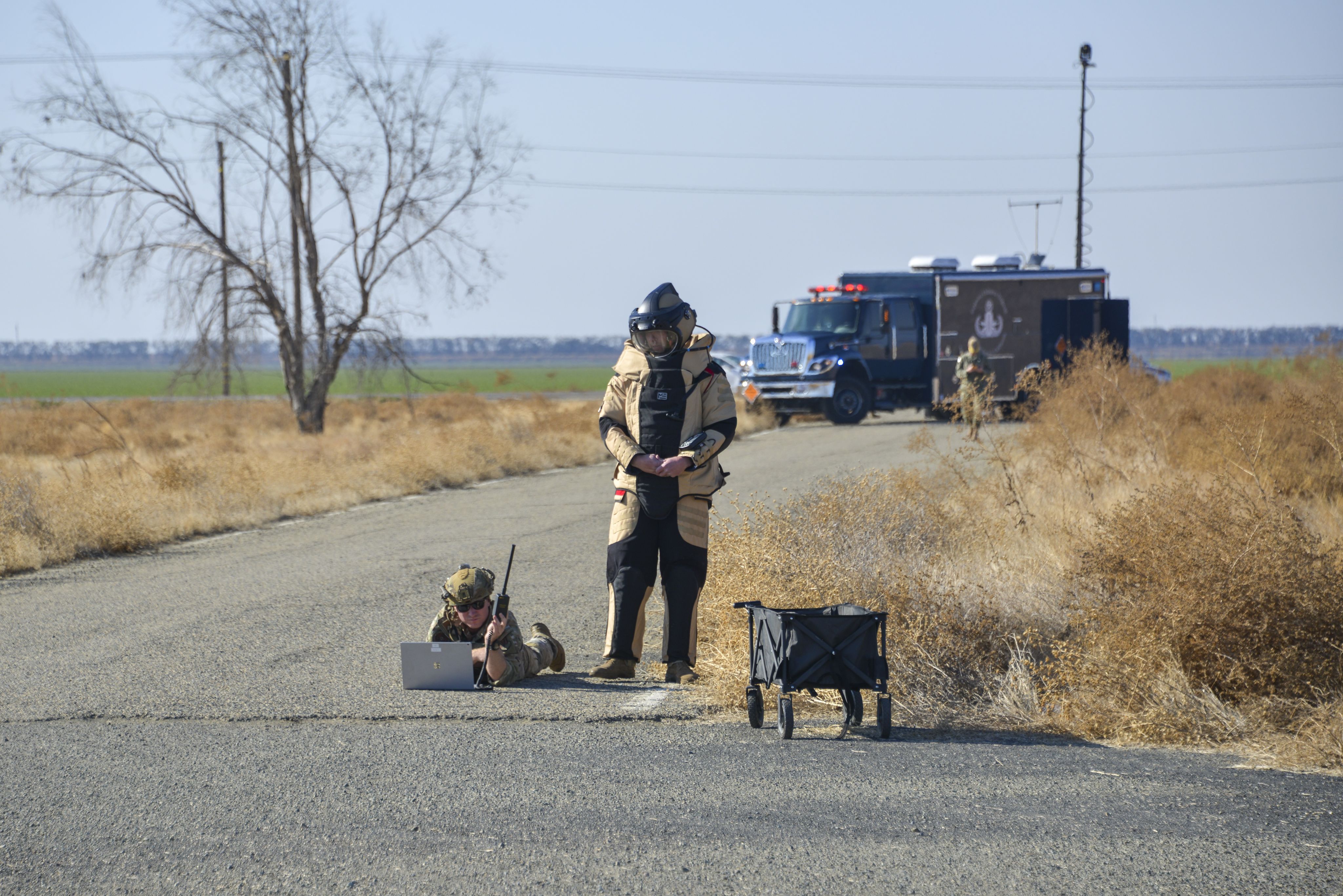
Jan. 31, 2024
Story by Capt. Jason Sanchez
144th Fighter Wing Public Affairs
FRESNO, Calif. - Explosive Ordnance Disposal technicians from the 144th Fighter Wing recently participated in a joint training exercise at Naval Air Station Lemoore, California, where they had to identify and neutralize a simulated improvised explosive device.
Personnel from both units collaborated on the training exercise to test their ability to work together and provide a realistic training scenario.
U.S. Navy Ensign Glenn Rokowski, NAS Lemoore security officer, said, “We were not only able to test our response, but to execute our Memorandum of Understanding with the 144th FW.”
The MOU between the air station and the wing identifies the 144th FW’s EOD team as the primary responder for any explosive ordnance found on base.
One of the unique features of the exercise was that the exact timeline was not communicated to either set of responders.
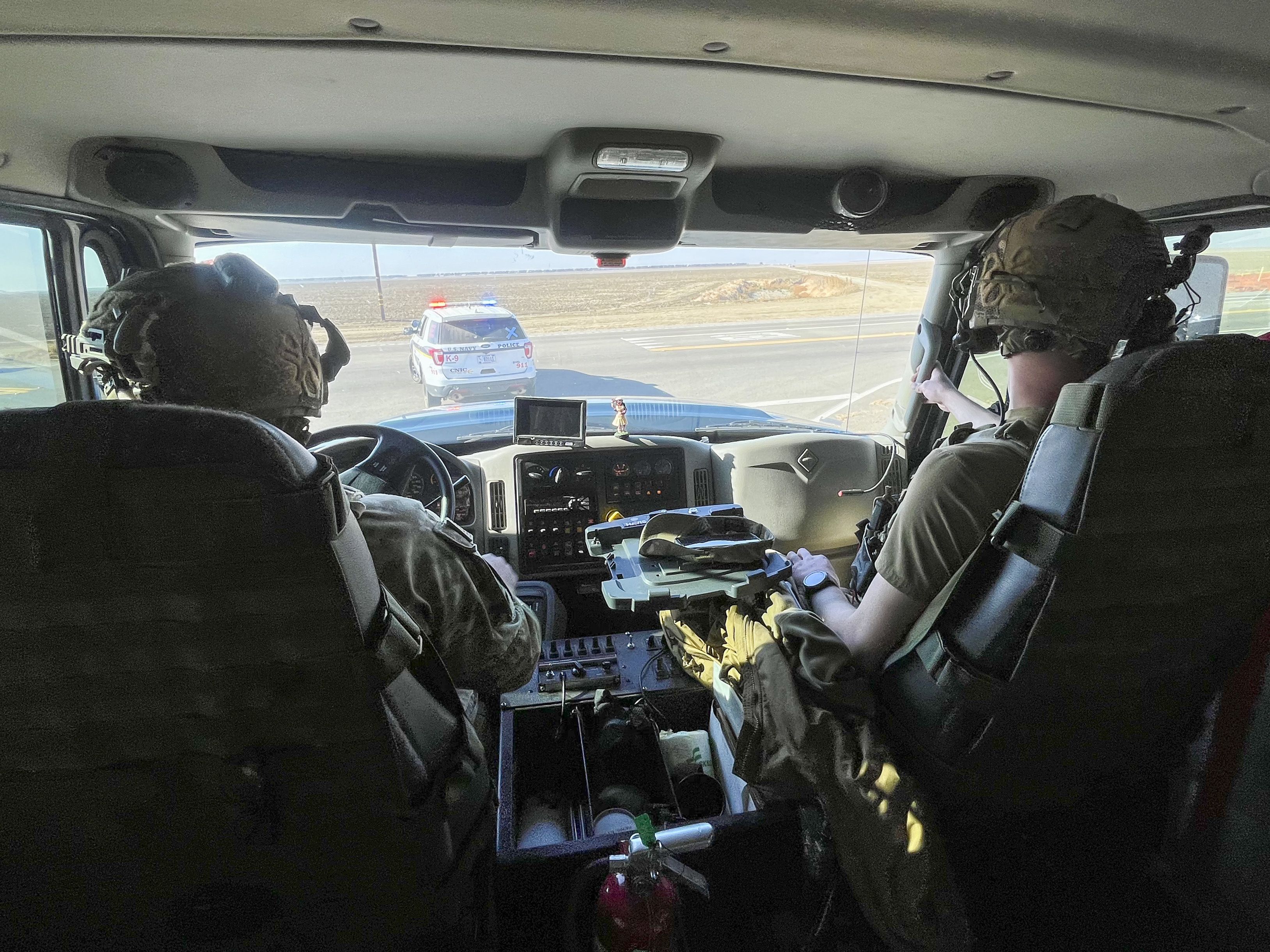
“The EOD technicians had no disclosure that there was going to be a response today,” said Rokowski. “They were at their home base when they got the call, so we got really accurate data for how long it took them to get from Fresno to Naval Air Station Lemoore.”
In the scenario, a simulated IED was found inside an abandoned vehicle. Once the EOD team received the notification, they packed up and left Fresno Air National Guard Base for the 45-minute drive to NAS Lemoore.
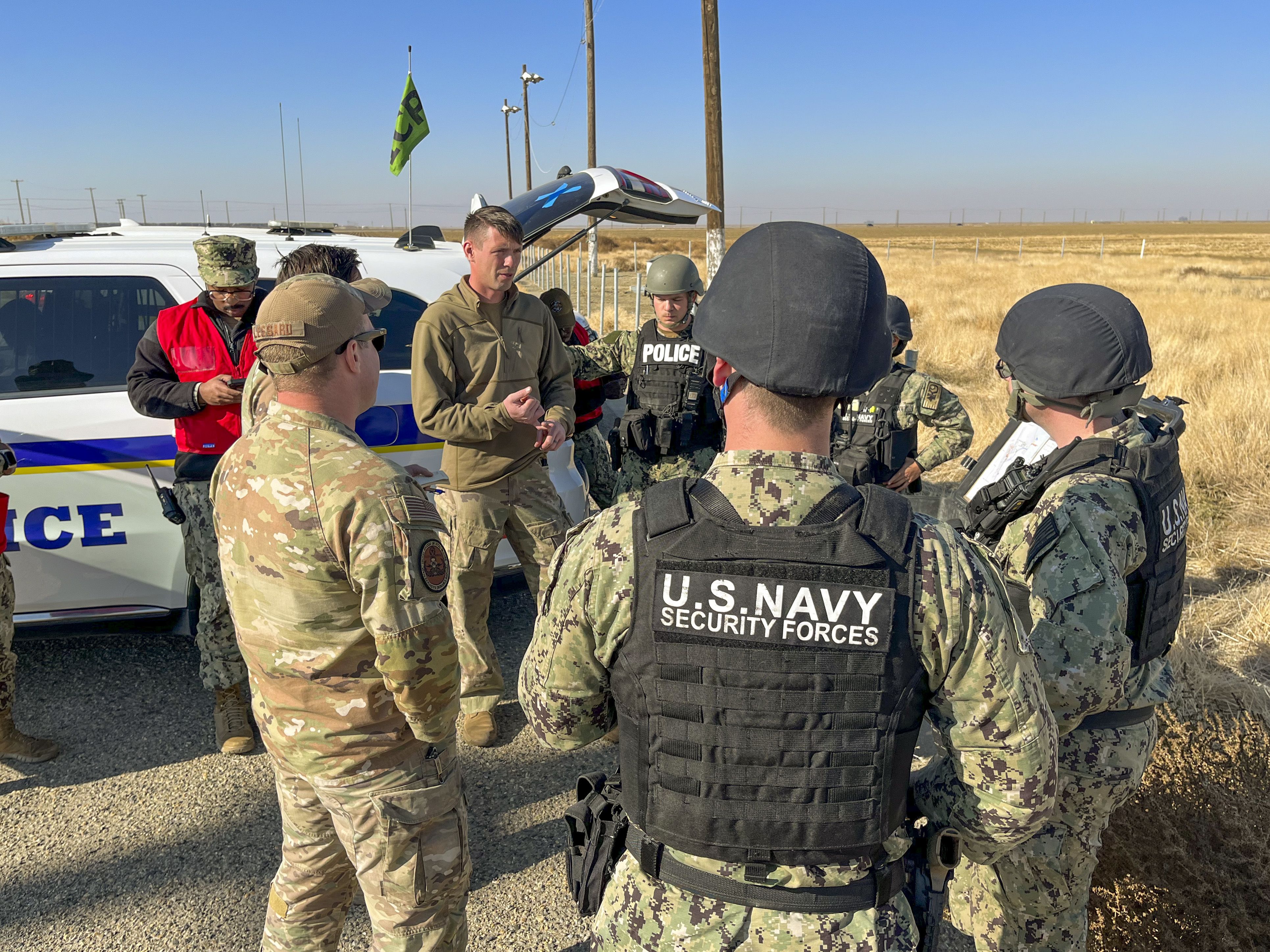
A U.S. Air Force F-15C Eagle assigned to the California Air National Guard's 144th Fighter Wing takes off for an afternoon sortie.
A U.S. Air Force F-15C Eagle assigned to the California Air National Guard's 144th Fighter Wing takes off for an afternoon sortie.
Brainard explained that, in training, he usually has to tell an evaluator who he would contact and what he would tell them for a given scenario. Real people were present in those roles for the training exercise, so they did not have to simulate that part.
“Instead, of simulating having to contact this person or that person, I actually got to reach out to the on-scene commander and tell him we needed a K9 sweep of the scene," Brainard said. "They then sent their dogs to do the final sweep of the scene. It was great to see those events all play out in real life.”
Senior Master Sgt. Charles Greer, 144th FW EOD superintendent, was as one of the evaluators for the training exercise and praised the teams for their performance and collaboration.
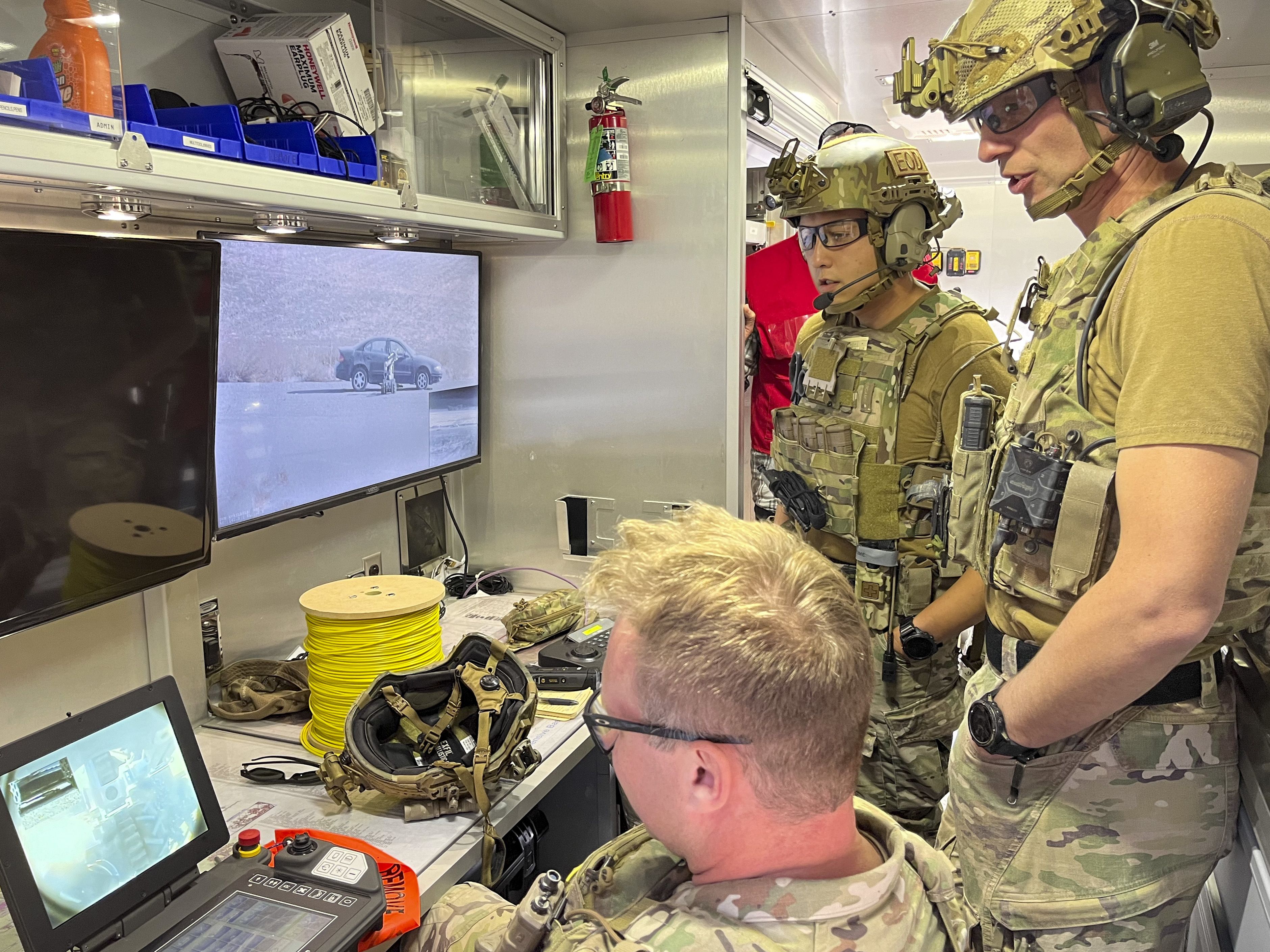
Airmen from the California Air National Guard’s 144th Fighter Wing conduct repairs on an F-15C Eagle.
Airmen from the California Air National Guard’s 144th Fighter Wing conduct repairs on an F-15C Eagle.
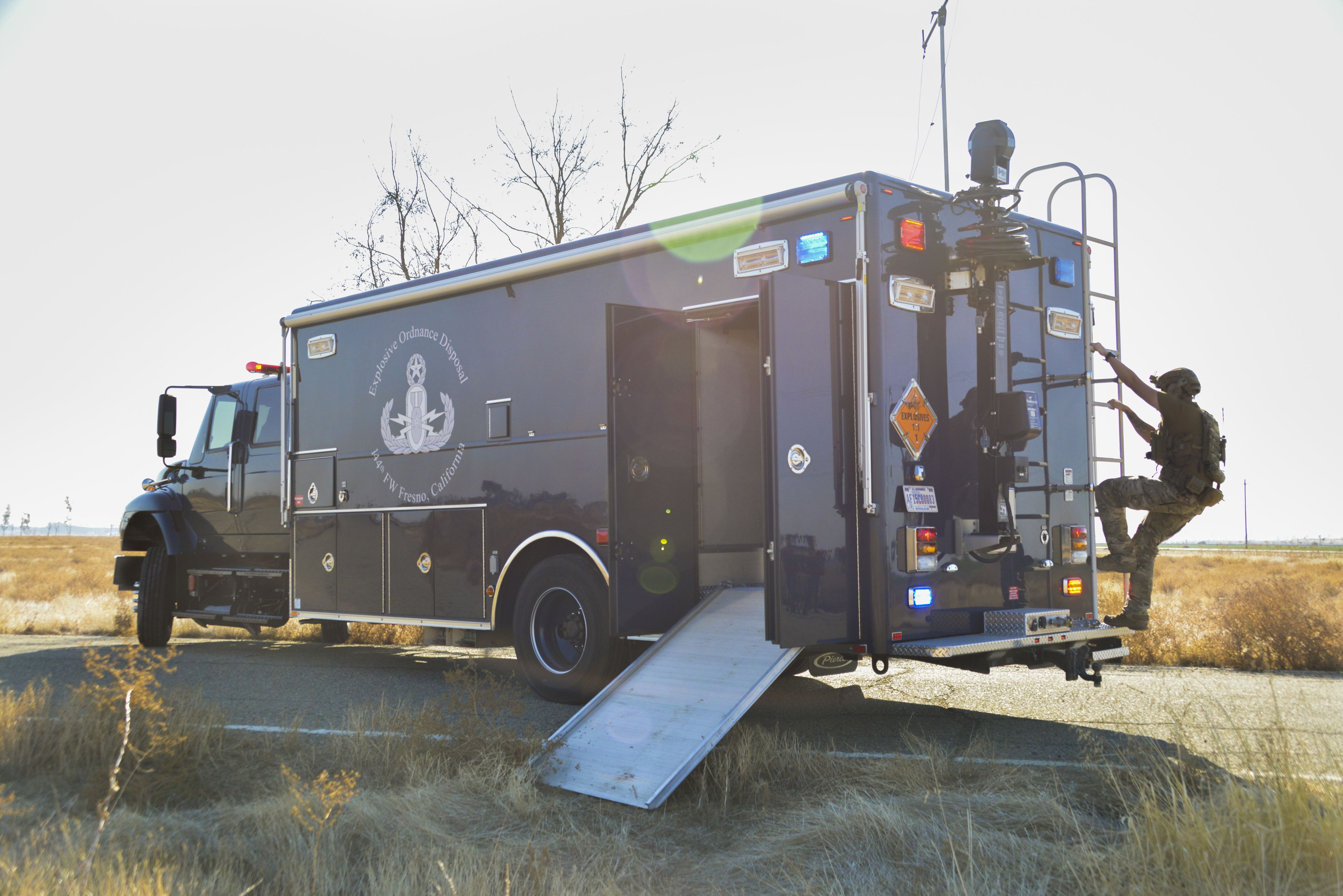
F-15C Eagles assigned to the 144th Fighter Wing, Fresno Air National Guard Base, California, line the taxiway after an elephant walk at Kadena Air Base, Japan.
F-15C Eagles assigned to the 144th Fighter Wing, Fresno Air National Guard Base, California, line the taxiway after an elephant walk at Kadena Air Base, Japan.
At the scene, the EOD technicians discussed the situation with NAS security forces, and then used a remote-controlled robot to investigate and dismantle the explosive before approaching the vehicle.
U.S. Air Force Tech. Sgt. Joseph Brainard, 144th FW EOD technician, served as the team leader for the response.
He said, “We often do a lot of realistic training, but we didn’t have to simulate our interactions with their team or their incident commander for this one.”
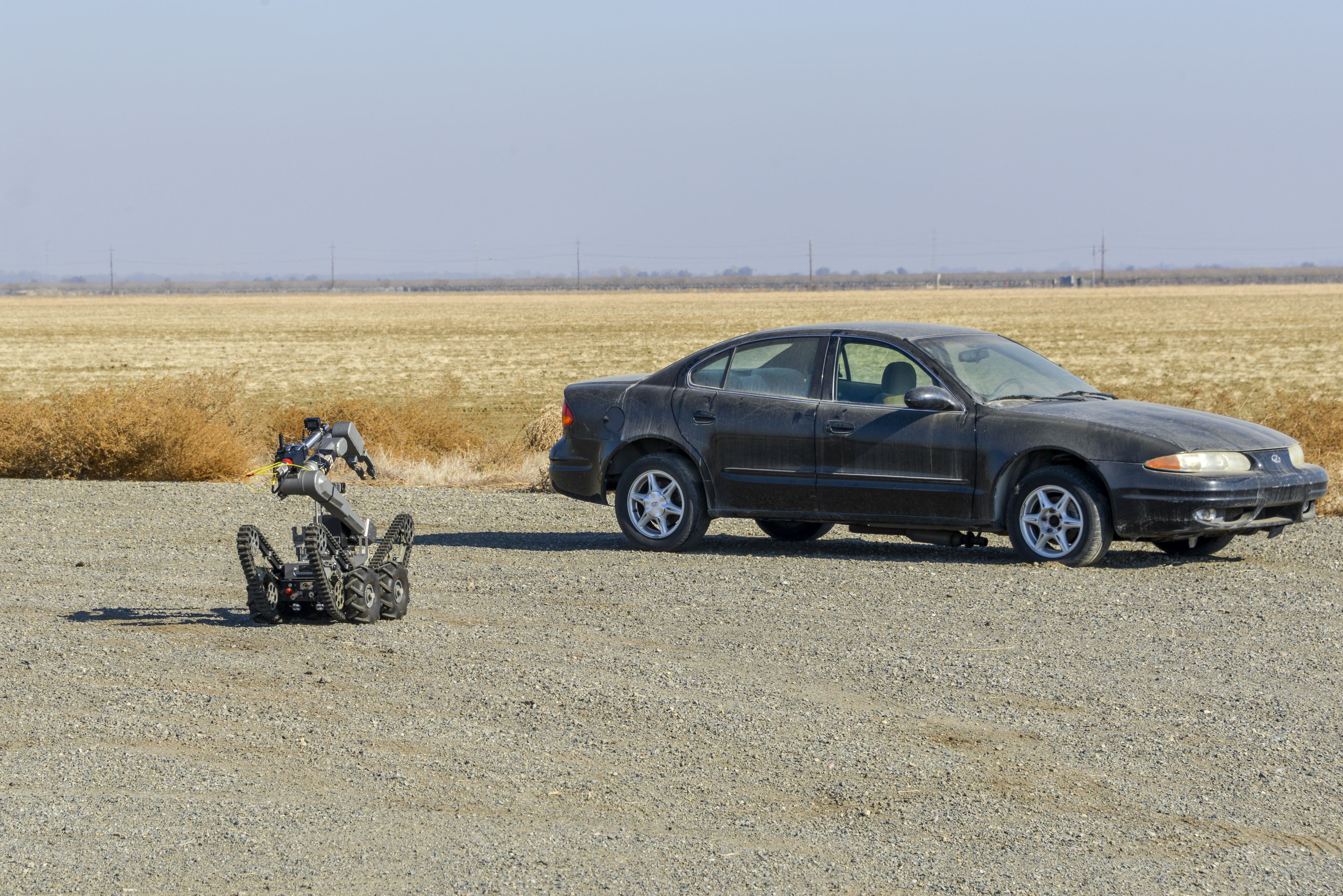
U.S. Air Force F-15C Eagles are lined up on the runway during an elephant walk at Kadena Air Base, Japan.
U.S. Air Force F-15C Eagles are lined up on the runway during an elephant walk at Kadena Air Base, Japan.
“The best part of exercise was watching the guys train with other agencies,” said Greer. “We’re bolstering partnerships; and we’re reestablishing a working relationship with Lemoore to regularly train together in the future.”
In addition to working with NAS Lemoore, the 144th FW EOD team works with law enforcement agencies whenever ordnance is located that may be associated with any type of military operations. Their role is to detect, identify, disarm, and safely dispose of explosive devices that threaten people, property, and natural environments.

